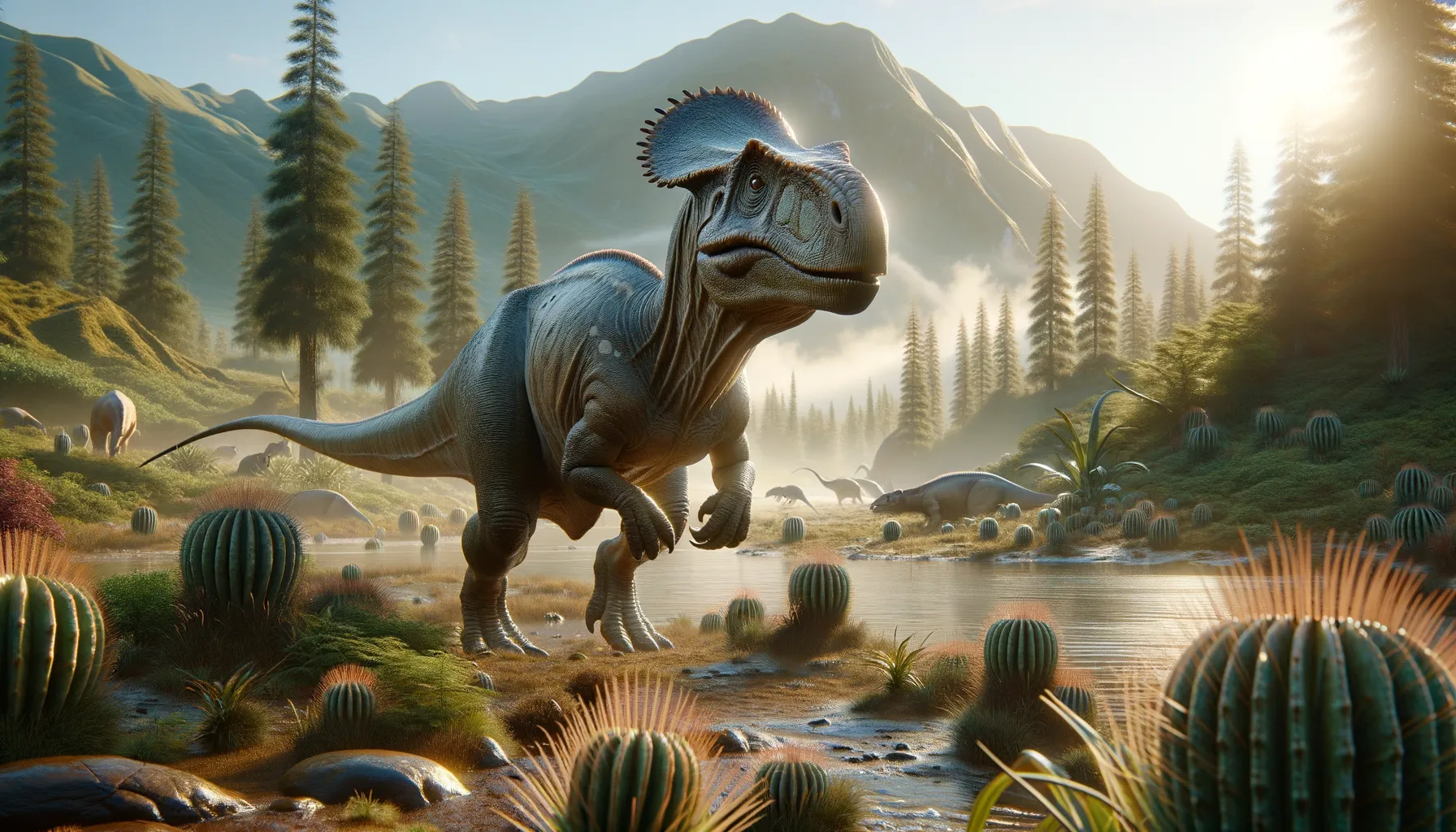
Stenotholus
Lively agility with a dome-shaped marvel!
Period
Cretaceous
Length
Measured approximately 3 to 5 meters in length.
Height
Stood about 1.5 to 2 meters tall.
Weight
Weighed approximately 200 to 400 kilograms.
Stenotholus was a medium-sized, bipedal dinosaur that roamed the earth during the Cretaceous period. Characterized by its dome-shaped skull, it is believed to have been a herbivore, navigating its environment with agility and contributing to the diverse ecological tapestry of its time. Its fossils have provided insight into the behavior and lifestyle of dome-headed dinosaurs, shedding light on evolutionary adaptations.
Diet
Stenotholus primarily fed on plants. It likely consumed a variety of vegetation available in its habitat. This diet would have provided the necessary energy to sustain its active lifestyle.
Hunting
While not a predator, it might have used its speed to dodge predators. Its dome-shaped skull was possibly used in intraspecies contests or defense.
Environmental challenges
During the Cretaceous period, Stenotholus faced environmental pressures such as changing climates and evolving flora. These challenges required it to adapt its foraging habits and possibly migrate to find sustainable food sources. Predatory threats were a constant concern, necessitating evolution towards greater speed and agility to evade capture.
Speed
Likely swift for short bursts.
Lifespan
Estimated between 10 to 20 years.
First discovery
First identified by paleontologists in North America.
Fun Facts
- Stenotholus is known for its distinctive thickened skull, which was probably used in head-butting contests.
- The name 'Stenotholus' means 'narrow dome', referring to its unique cranial structure.
- It lived during the Late Cretaceous period, which was the last portion of the age of dinosaurs.
- Fossils of Stenotholus have been found in North America, providing clues about its habitat and behavior.
- Stenotholus is part of the Pachycephalosauridae family, a group of dinosaurs known for their thick skulls.
- Despite its ferocious appearance, Stenotholus was likely a herbivore, feeding on the lush vegetation of its era.
Growth and Development
Stenotholus likely grew at a steady pace from hatchling to adult. As it matured, its dome-shaped skull would have become more pronounced and robust. This growth pattern suggests it played a role in mating displays or social hierarchy, with more developed domes being advantageous in encounters.
Habitat
Stenotholus inhabited forested areas and open plains, thriving in various climates. The regions it lived in supported ample plant life, offering a consistent food source. Water sources nearby would have been essential for its survival, ensuring its daily needs were met.
Interaction with other species
Stenotholus interacted with various herbivorous and carnivorous species. Its dome might have been used for social interaction, including contests or mating rituals. In its ecosystem, it served as part of the food chain, balancing herbivorous populations.
Natural lifespan
It lived up to 20 years under natural conditions.
Reproduction
Stenotholus reproduced via eggs, laying them in nests possibly constructed in secluded areas. Parental care might have been present to some extent, ensuring offspring survival in early life stages. Nesting areas were likely chosen for optimal temperature and protection.
Social behaviour
Stenotholus may have lived in small groups or pairs, providing mutual benefits such as protection and foraging efficiency. The dome was likely crucial in establishing social dominance or mating rights. Interaction with peers was possibly frequent, necessitating a complex social structure.
Fossil locations
Fossils of Stenotholus have been primarily found in North America. These finds have been crucial in understanding its ecological role. Sites have included a mix of floodplain and upland regions, indicating its adaptability to different environments.
